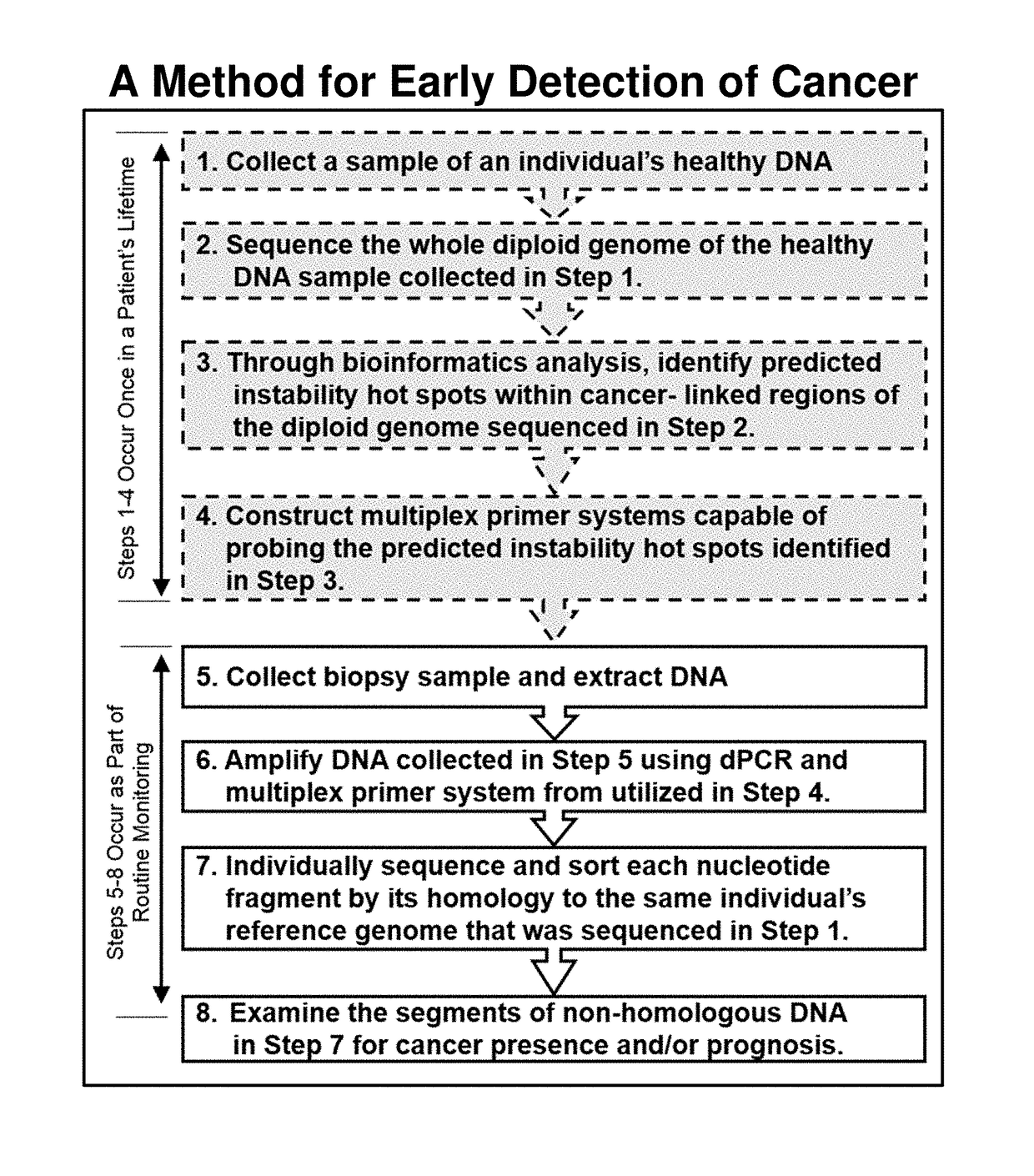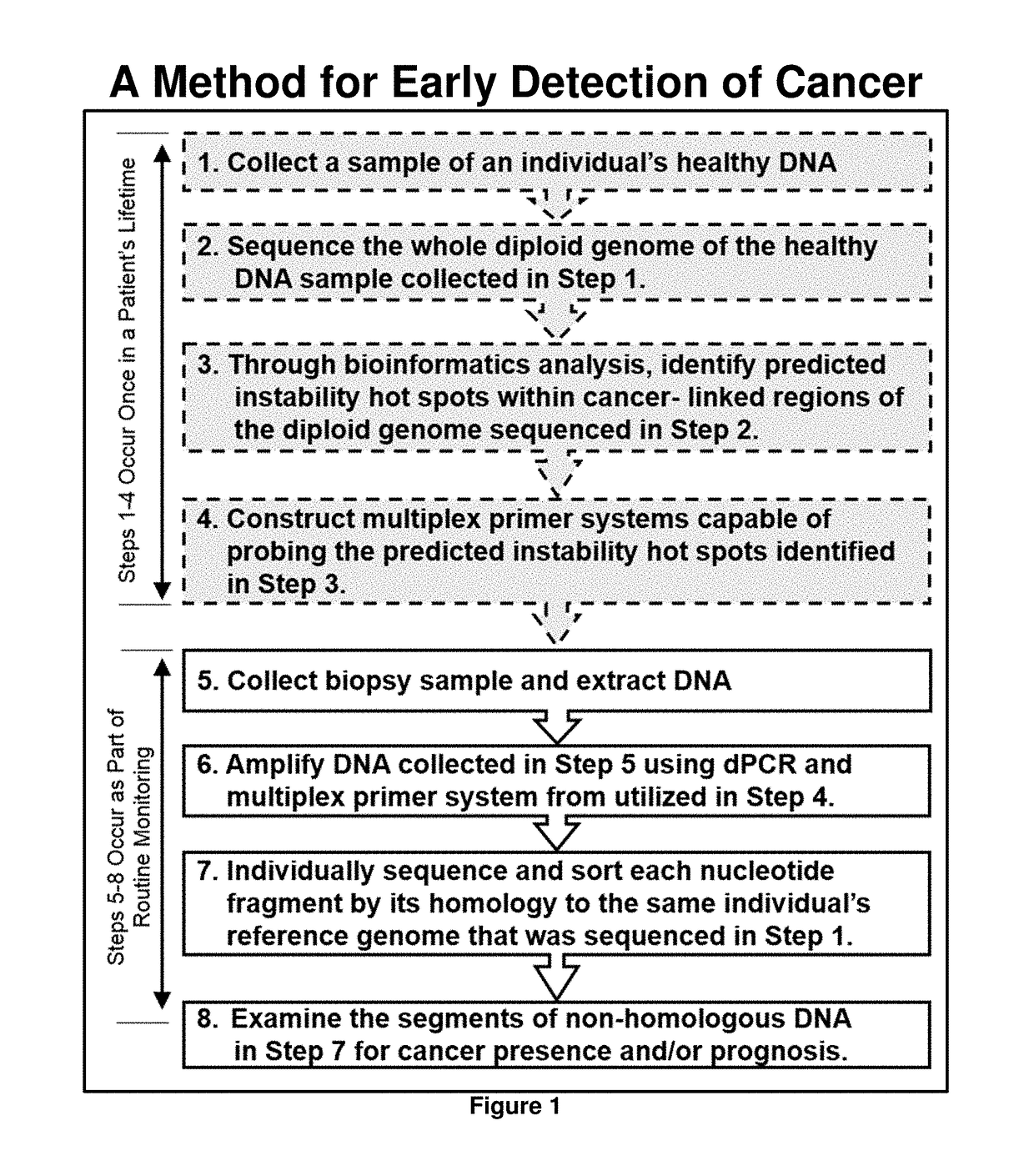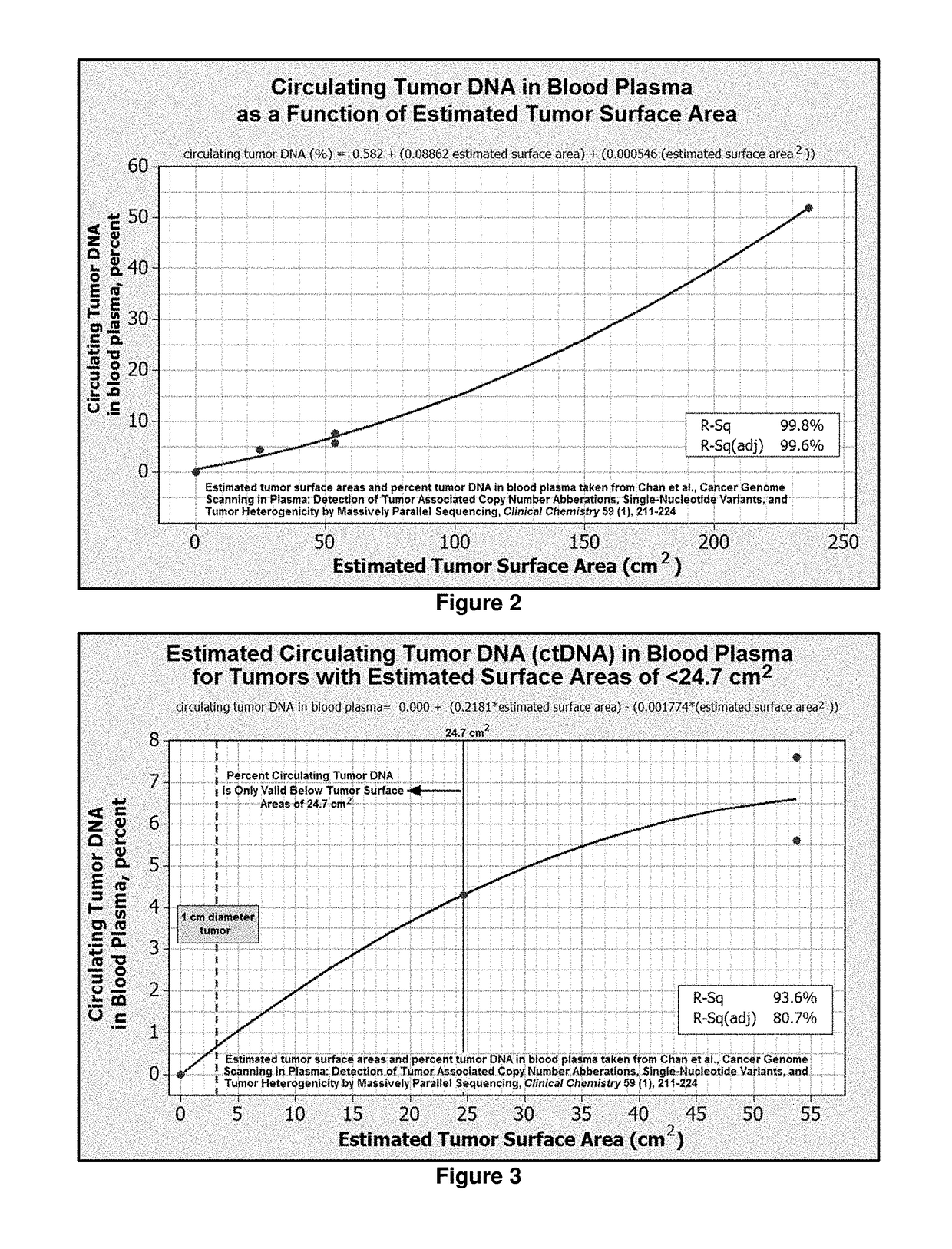Clinical use of an Alu element based bioinformatics methodology for the detection and treatment of cancer
a bioinformatics and element technology, applied in the field of human genetics, can solve the problems of high genome instability and damage to the dna within the predicted region of high instability
- Summary
- Abstract
- Description
- Claims
- Application Information
AI Technical Summary
Benefits of technology
Problems solved by technology
Method used
Image
Examples
example 1
Determination if a Cancer-Linked DNA Sequence is Present in a Blood Sample
[0072]Detection of the presence of cancer-linked DNA damage in the DNA of a blood biopsy sample is an indicator of the presence of a neoplasm that may be cancerous or may become cancerous. The general methodology described in this example is summarized in FIG. 1. As would be expected from a methodology capable of very early detection of cancer, false positives will likely occur at some frequency. Whether the detection of the presence of a cancer-linked mutation is actually an indicator of cancer can be validated by subsequent testing and routine patient monitoring. For instance, if the presence of a potential biomarker is detected, but this biomarker is only present at the lower detection limit of a given analysis, routine monitoring can be performed to detect any increase in the biomarkers concentration. This bioinformatically-guided technology thus adds valuable time for cancer treatment that is not presentl...
example 2
Use of the Damaged DNA Sequence at a Bioinformatically Predicted Cancer-Linked Region in an Individual's Genome as a Biomarker for Locating a Tumor
[0098]RNA has been shown to bind to complementary double-stranded DNA to form a DNA-DNA-RNA triplex helix {34}—(Duca et al. 2010). It has also been shown that engineered zing fingers can be designed to bind to DNA in a sequence specific manner {35}—(Jantz and Berg 2010). Either of these techniques could be used to bind to cancer specific DNA. If these probes were added to the bloodstream, any unbound probes would likely find their way to the surface of the tumor and bind to the DNA leaking from the tumor. If RNA or engineered zing fingers are synthesized which are also radioactively labeled, the tumor could then be located via CT scans or PET-CT scans.
[0099]As will be apparent to one skilled in the science of biochemistry, variations of DNA sequence specific binding by other molecules may be possible. The molecules used in this example ar...
example 3
Use of the Damaged DNA Sequence at a Bioinformatically Predicted Cancer-Linked Region in an Individual's Genome as a Biomarker for Measuring Tumor Progression
[0100]The sequence of cancer-linked DNA damage gained from Example 1 can be uses as an excellent cancer biomarker for the detection of tumor progression. With this biomarker routine monitoring of the bloodstream for an increase in biomarker concentration can serve as a method for measuring tumor progression.
[0101]When the presence of tumor DNA is identified in the bloodstream of a patient, subsequent tumor monitoring would entail repeating Steps 4-8 in Example 1, with one important difference. Step 4 would no longer require the multiplex primer system for identifying cancer linked DNA damage. Since the cancer linked DNA damage has been identified, this step would only require the two primers which would amplify the section of DNA containing the “split read” cancer-linked sequence. This would allow for much deeper sequencing at ...
PUM
| Property | Measurement | Unit |
|---|---|---|
| Electric dipole moment | aaaaa | aaaaa |
Abstract
Description
Claims
Application Information
 Login to View More
Login to View More - R&D
- Intellectual Property
- Life Sciences
- Materials
- Tech Scout
- Unparalleled Data Quality
- Higher Quality Content
- 60% Fewer Hallucinations
Browse by: Latest US Patents, China's latest patents, Technical Efficacy Thesaurus, Application Domain, Technology Topic, Popular Technical Reports.
© 2025 PatSnap. All rights reserved.Legal|Privacy policy|Modern Slavery Act Transparency Statement|Sitemap|About US| Contact US: help@patsnap.com



